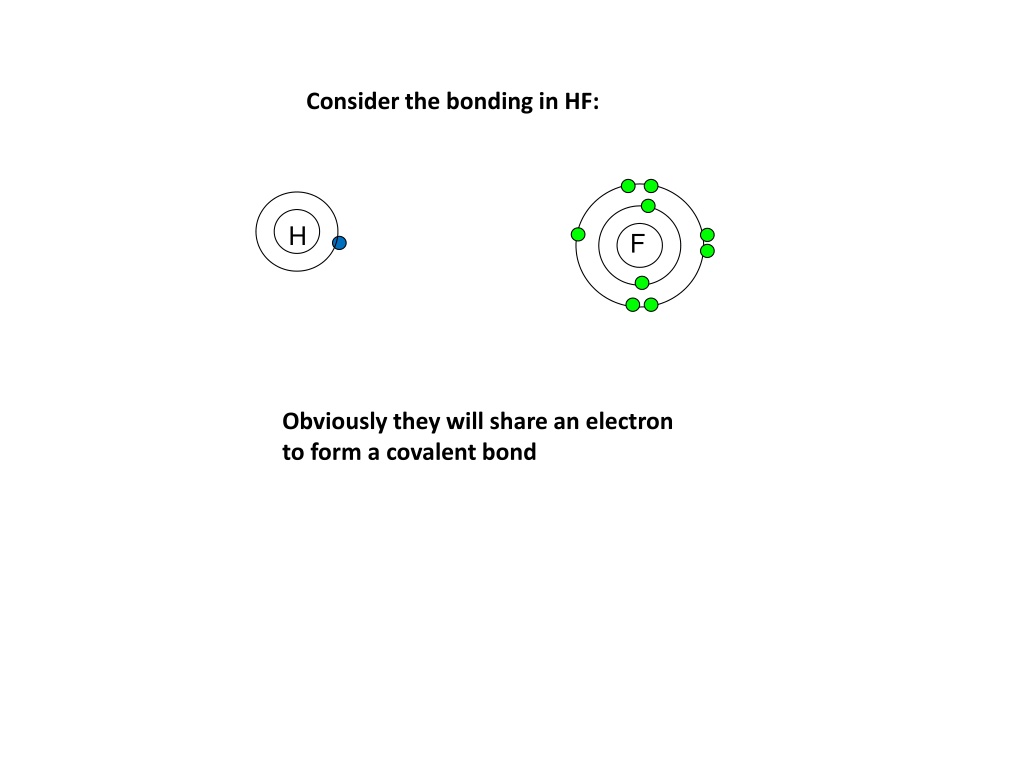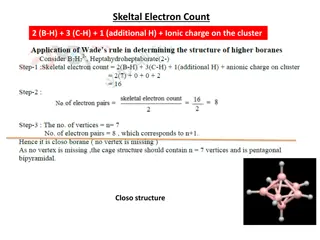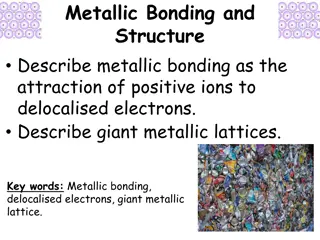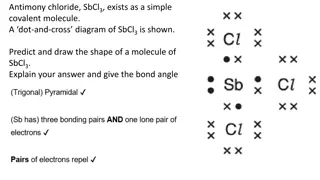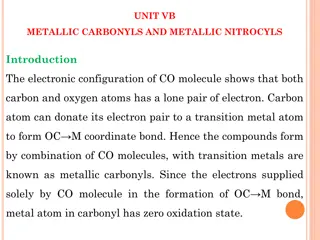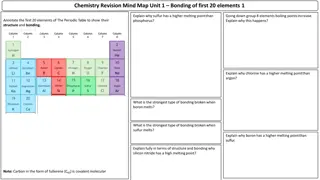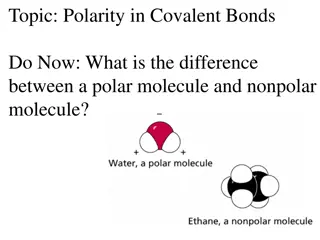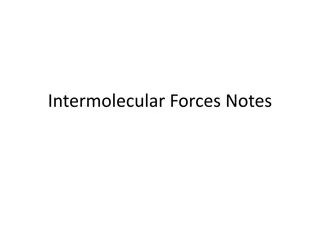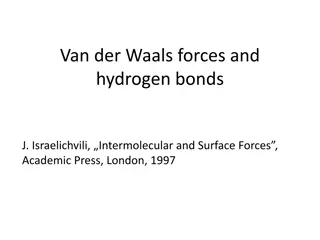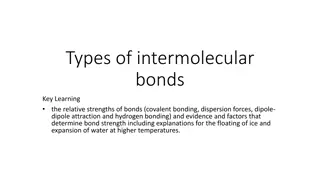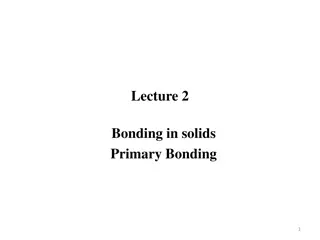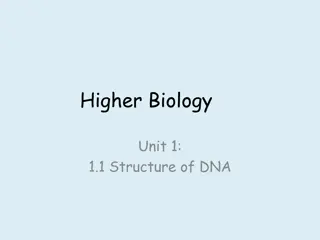Understanding Bonding in HF Molecule
In HF bonding, hydrogen and fluorine share an electron to form a covalent bond. Fluorine, being more electronegative, attracts the bonding electrons more, resulting in a polar covalent bond. If hydrogen was less electronegative, the bonding electrons would shift further towards fluorine until an ionic bond forms. Through illustrations, the progression from a shared covalent bond to ionic charges on the atoms in HF bonding is explained.
Download Presentation

Please find below an Image/Link to download the presentation.
The content on the website is provided AS IS for your information and personal use only. It may not be sold, licensed, or shared on other websites without obtaining consent from the author. Download presentation by click this link. If you encounter any issues during the download, it is possible that the publisher has removed the file from their server.
E N D
Presentation Transcript
Consider the bonding in HF: H F Obviously they will share an electron to form a covalent bond
Consider the bonding in HF: H F Obviously they will share an electron to form a covalent bond
Consider the bonding in HF: H F Lets redraw it showing only the bonding electrons
Consider the bonding in HF: + - H F Fluorine is more electronegative than hydrogen. This means the bonding pair of electrons will be more attracted to the fluorine atom giving a polar covalent bond.
Consider the bonding in HF: + - H F What if the hydrogen was an element that was less electronegative?
Consider the bonding in HF: + - F The bonding electrons would move even further towards the fluorine atom.
Consider the bonding in HF: + - F A point will be reached where the bonding electrons are no longer shared. Fluorine has taken both of the bonding pair electrons. Its own, and the one donated from the lesser electronegative atom. The covalent bond no longer exists.
Consider the bonding in HF: 1+ 1- F Fluorine has gained an electron, fluorine now has a 1- charge and is an ion. The other atom has lost an electron to have a 1+ charge.
Consider the bonding in HF: 1+ 1- F Lets look at the full dot and cross diagram:
Consider the bonding in HF: 1+ 1- F Lets look at the full dot and cross diagram:
Consider the bonding in HF: 1- 1+ F If the 2 atoms are very different in electronegativities then the bonding electrons are so far towards the more electronegative that ionic bonding now occurs.
